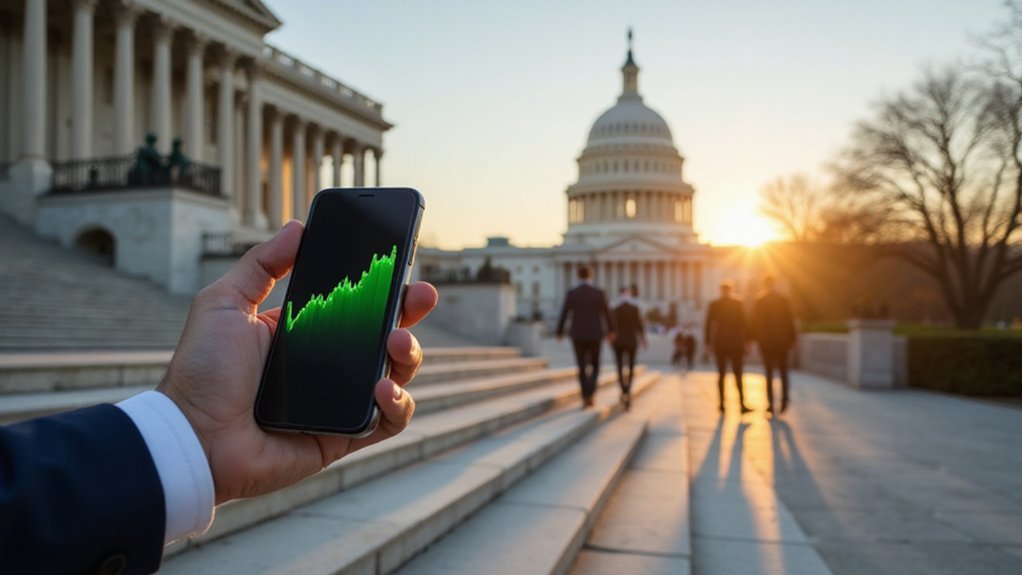The cryptocurrency industry‘s most influential players are orchestrating an unprecedented push for regulatory clarity, demanding that lawmakers abandon the haphazard “regulation by enforcement” approach that has plagued digital assets for years. This coordinated effort comes as 2025 witnesses historic legislative momentum, with the GENIUS Act now signed into law alongside proposed CLARITY and Anti-CBDC Acts—collectively representing the most extensive federal crypto legislation in US history.
Leading crypto titans argue that without proper developer protections, the entire digital asset ecosystem faces potential collapse. Their calls for “tech-neutral” regulations reflect growing frustration with regulatory frameworks that seemingly favor traditional finance while subjecting blockchain innovators to Byzantine compliance requirements. The irony isn’t lost on industry observers: the same technology promising financial democratization now requires institutional lobbying to survive regulatory hostility.
The stablecoin sector exemplifies these regulatory complexities. New legislation mandates reserve requirements, transparency standards, and KYC/AML compliance—reasonable demands that nonetheless struggle with stablecoins’ inherently borderless nature. How does one enforce jurisdiction over decentralized protocols operating across multiple sovereigns? The proposed solution involves global coordination (a diplomatic feat rivaling herding cats) and blockchain analytics partnerships for illicit activity monitoring.
Enforcing jurisdiction over borderless decentralized protocols requires global coordination—a diplomatic feat rivaling herding cats.
Market volatility adds urgency to these regulatory discussions. Despite cryptocurrency price fluctuations driven by economic uncertainties, growth areas like DeFi and real-world asset tokenization continue expanding. However, investor caution has tightened venture capital funding, making regulatory certainty even more vital for sustained innovation. Emerging networks demonstrate how RWA tokenization can unlock previously illiquid assets while maintaining institutional-grade security standards.
The Senate and House recognize these bills’ importance for maintaining US competitiveness in digital asset innovation—a revitalizing acknowledgment that other jurisdictions aren’t waiting for American legislative perfection. Regulatory sandboxes represent promising compromises, allowing controlled experimentation while maintaining oversight guardrails. The CLARITY Act introduces the digital commodity classification for decentralized tokens, providing crucial legal distinction from traditional securities.
Industry demands extend beyond mere compliance clarification. Crypto firms seek internationally coordinated frameworks preventing regulatory arbitrage—the dreaded “race to the weakest link” scenario where projects migrate to permissive jurisdictions. The US Travel Rule requires crypto platforms to collect personal information for transactions exceeding $3,000, highlighting the compliance burden facing digital asset service providers.
Whether legislators can craft regulations sophisticated enough to protect innovation while preventing systemic risks remains the trillion-dollar question. The alternative, as crypto titans warn, might be watching promising technological revolution collapse under regulatory confusion.









